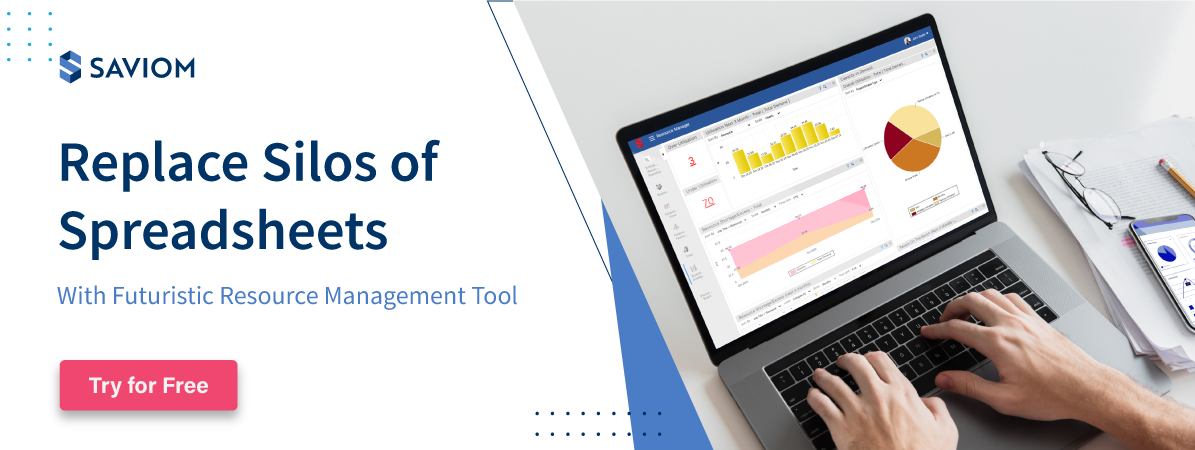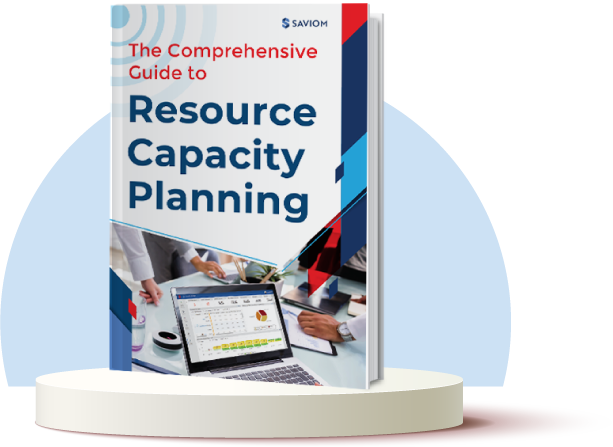Challenges of market volatility, acute cost pressure, and skill shortages have become new normal for businesses around the world. In such an environment, are these firms equipped with the right tool to face these modern age challenges?
Most of these firms are fighting challenges of the 2020s using tools developed in the 1990s. They are simply outdated, inefficient, and not helping the businesses in sustainability and profitability.
So, this article has been designed to understand how current tools
are hurting businesses and how you can resolve this. This article contains:
- What are the workforce or resource management challenges of business?
- Which resource management solution is used by the business?
- How exactly are these tools hurting the business?
- How to choose the right tool for manage resources efficiently?
What Are the Workforce or Resource Management Challenges of Business?
Most of the organizations around the world are facing these business challenges:
- Suffering from a minimum profitable/low-profit utilization
- Inability to meet fluctuating volatile resource or workforce demand
- Unable to identify the right resource for the right job at the right time
- Suffering from talent gaps across the business
- Misalignment between sales and delivery teams
- Inefficient project resource management with spreadsheets and emails
Which Resource Management Solution Is Used by the Business
These are commonly used resource management tools by businesses around the world. It is a fact irrespective of the size or market share of these firms.
Silos of Spreadsheet Based Resource or Workforce Scheduling
Most of the small to medium-size firms end up developing their resource management solution by using spreadsheets and macros.
These tools are very easy to develop and meet their immediate business requirements. They are not equipped with flexible operations; hence, they are difficult to maintain.
Home-Grown Half-Baked Resource or Workforce Scheduling Systems
Due to the limitation of spreadsheets, some of the firms have developed in-house resource scheduling solutions with large investments.
Inefficient developers have generally built these tools. They do not have much-specialized knowledge of resource management and the skills of designing complex software systems. These systems are simplistic and half-baked solutions.
Outdated Windows Based Resource Scheduling Tools of the 1990s
Some businesses are still using resource scheduling tools developed in the 1990s. These tools are developed using outdated technology windows, lotus notes, flat files, access databases, etc.
They were initially designed to address resource scheduling challenges, and they served well during that era. Now they are no more suitable for solving challenges of the 2020s.
Read More: 7 Powerful Benefits of Resource Scheduling for Project Managers
Basic Entry Level Software
The market has been flooded with several vendors in the last five years providing software with necessary resource scheduling capabilities. But as a matter of fact, resource scheduling is just one part of the resource management challenges.
These tools are very simplistic, rigid, and operate at entry-level business requirements. Most of the businesses adopting these tools grow out of these solutions very soon. It requires maintenance and ends up having their add-ons.
Most of the businesses adopting these tools grow out of these solutions very soon. It requires maintenance and ends up having their add-ons.
How Exactly Are These Tools Hurting the Business?
Most of the businesses are unaware of the fact that the outdated legacy tools are adversely affecting their current/future prospects. They are not equipped to face new challenges of the 2020s.
Easy to Develop but Difficult to Maintain
Spreadsheets and home-grown tools are generally easy to develop in the beginning to meet initial business requirements. They lack typically useful functionalities. As business requirements change and grow, they become a nightmare for the business.
Paying High Price for Lost Market Opportunities
With current tools, businesses are unable to respond to fast-changing market conditions. They end up losing new market opportunities by neglecting the positive impact of technology.
For example, there is an important market opportunity that is critical for business success. These tools can’t provide you with “What if Analysis” to see whether such an opportunity can be accommodated within current resource constraints.
Unable to Provide Forecasting and Capacity Planning
Most of these tools don’t provide effective resource forecasting. Businesses are unable to get valuable foresight into the future.
For example, businesses can’t forecast excesses or shortage of resources due to a lack of effective capacity planning. Due to this limitation, most of the firms operate in a reactive mode.
Not Designed for Improving Profitable Utilization & Cost Reduction
Improving profitable resource utilization and reducing resourcing costs is a critical part of every business.
But most of the legacy tools are not fundamentally designed to meet those requirements. In the absence of these capabilities, businesses are unable to improve profitable utilization and affect business sustainability.
Unsuitable for Matrixed Organization Structure
Most of the large businesses around the world have adopted a matrix organization structure. It allows for efficient usage of a centralized resource pool.
This structure brings its own set of logistic and management challenges with the potential to create the business chaos. Legacy tools don’t have the level of flexibility to align around varying matrix organization structure.
Unable to Provide Real-Time Business Intelligence
Resource management has fast-changing business dynamics due to changing work priorities and demand volatilities. It is critical to have real-time business intelligence with reports, analytics, and dashboards. Unfortunately, these tools don’t provide such features.
How to Choose the Right Tool for Efficient Resource Management?
A business shouldn’t just look for a solution to replace the current spreadsheet with a better scheduling tool. It needs to go much beyond current capabilities.
The tool must unleash the power of their workforce by managing them efficiently and intelligently.
Criteria #1: Web-Based Solution with Modern Platform
It is an essential requirement that the resource management solution operates entirely on a web platform. It can be accessed from anywhere at any time by anyone. Stone-aged windows-based solutions are a significant hindrance to facing new business challenges.
Criteria #2: Scalable, configurable and expandable
Every business is different, so are their resource management needs. You can’t have one size fits all solution, that where configurability can be a solution!
An organization should select a tool that is scalable, configurable, and expandable to meet current and future needs.
Criteria #3: Forecast and Reduce Resourcing Cost
An efficient resource management solution should help you forecast and reduce your project resourcing cost significantly through the following means.
- Eliminate under/over skilled resources on projects
- Utilize cost-effective global resources without compromising quality
- Improve billable and strategic resource utilization
- Avoid last-minute hiring cost with proper capacity planning
- Minimize hiring/firing cycles by aligning project workload with workforce capacity
Read More: Reduce Resourcing Cost by 10-30% with Modern Resource Management Solution
Criteria #4: Deploy Competent Resources
Having the right resource with the right skills is crucial for a project to finish within budgeted time and cost.
The right resource management tool can help you Identify and allocate competent resources instantly. It will be based on their availability, skills, qualifications, location, team, resource cost rate, and any other criteria your business requires.
Criteria # 5: Maximise Profitable Utilization
More working hours don’t necessarily translate into improved business performance. It is due to the employee spending time on non-billable activities or working on non-strategic/low priority projects.
An effective resource management solution can help you forecast billable and strategic utilization of resources ahead of time so that you can move your competent resources from non-billable or low priority work to billable or high priority projects.
Criteria # 6: Resolve challenges of matrix management
An efficient resource management solution provides visibility to the right stakeholders. It also helps them manage resources efficiently based on the dimension they perform in a matrixed organization structure.
Read More: 5 Easy Steps to Request Resources Efficiently
Criteria # 7: Improve Project Delivery Time & Cost
An effective resource management solution helps you forecast and track various key performance indicators related to the resources and projects. It can improve the business to take corrective action proactively to ensure on-time delivery without increased cost.
Criteria # 8: Gain Real-Time Business Intelligence
It is critical to have a robust and enterprise-grade real-time business intelligence in a resource management solution so that the management can make timely and effective decisions based on current facts.
Criteria # 9: Integration with Existing Enterprise Systems
Most of the businesses have already invested in enterprise-level systems holding quite a bit of data. This data is required by a resource management system, i.e., resource profile, competencies, project detail, etc. So, the resource management system must integrate seamlessly with existing systems.
Criteria #10: Build Optimised Workforce
Effective capacity planning in resource management helps you forecast the gap between resource capacity against volatile demand.
Proactive resourcing treatment can be timely applied to ensure that the workforce has the right capacity to match the demand.
Read More: What is Workforce Planning, and How to Master it for Business Efficiency?
The SAVIOM Solution
SAVIOM is the market leader in providing a futuristic solution for intelligent resource management and smart Resource Capacity Planning. It has more than 20 years of experience working with high valued global companies around the world. SAVIOM also provides tools for project portfolio management, professional service automation, and workforce planning software. So, SAVIOM can help your business to establish an efficient system geared towards your specific business challenges.









